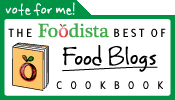I recently found this very intriguing article in Fine Foods Magazine. It was something I think we all question how long to keep our freezer stash. I know that I will keep food in the freezer much longer than originally planned and then I will have to throw it out. A waste of money and a waste of space.
In these crazy times where a well stocked pantry and a full freezer can make-up some of the difference between pay check to paycheck, we all need to know what to keep and what to eat right away. I hope this helps all of us myself included in having a happier, safer freezer.
I am a big fan of Farmers' Markets. They are a great way to get good fresh food and a great bargain. I know we all get excited to see food at such wonderful prices and in such abundance as well as a much more fresh and delicious. I myself am not a farm girl, despite being surrounded by beautiful farm lands. Even in Lafayette, we have a wonderful Tuesday, Thursday and Saturday farmers' market full of bread and homemade angel food cakes in addition to all of the fruits and vegetables. We also have the corn trucks that sell corn from early July to late September, depending on the harvest.
We all buy bulk as much as possible these days, myself included. With eyes as large as dinner plates, I will buy a bushel of apples or bags of carrots or the big box of berries. My mind full of recipes and shopping cart full of food, I will go home and fill my once empty fridge with a crate of berries. The once very appealing bulk of the berries is just too much for me to use up. Pies and cakes, muffins to name a few...but sadly it only really uses up a few cups of the ton of berries. What a waste! I have previously frozen berries and corn and unused dough, however, I am never too sure how long these items can stay frozen, 6 to 12 months was the normal.
Thanks to Fine Cooking magazine... we now have an exact guide to the ins and outs of freezing our bulk foods.
Type of Food | Shelf Life in Months |
Beef & Lamb, steaks and roasts | 12 |
Pork Chops & roasts | 4 to 8 |
Ground Meat | 3 |
Sausage | 1 to 3 |
Whole Turkey & Chicken | 12 |
Turkey & Chicken Parts | 6 |
Whole Duck & Goose | 6 |
Lean Fish | 6 |
Oily Fish | 2 |
Vegetables | 8 |
Fruit | 12 |
Butter | 2 |
Heavy Cream | 1 |
Bread & Rolls | 2 to 3 |
Raw Yeast Dough | 3 |
Unbaked Fruit Pies | 6 |
Cakes | 6 |
Big Buy 2009
Fine Cooking Magazine
Tips for Better Freezing:
- Check your freezer temperature. I Ideally home freezers operate at about 0˚F and can freeze food quickly. Poorly operating freezers and ice-tray compartments will freeze food slowly (between 25˚F and 31˚F), resulting in larger ice crystals and poor texture in your frozen food.
- Wrap food tightly. Limit moisture loss and prevent freezer burn by sealing food tightly in moisture- and vapor-proof wrap. Freezer burn occurs when the moisture for the surface of food evaporates. Be sure to use plastic bags that are specifically for freezer use, non-permeable plastic wrap (Saran) or containers, and squeeze out as much air as possible before sealing.
- Freeze food quickly. Set the food on the freezer's lowest shelf, which is usually colder than the upper shelves. When the food is frozen solid, it can then be moved to another shelf. Adding too much frozen food can warm up the freezer, so only add about 10% of the freezer's capacity at a time.
- Don't exceed the expected shelf life. Even foods that freeze well deteriorate if left in the freezer too long. Label and date frozen foods. Use the chart as a guideline fore maximum storage time.
- Keep vegetables green. Most vegetables, such as peas, asparagus, broccolini, and corn should be blanched before freezing, to set color and slow vitamin loss. To blanch: bring a large pot of water to a rolling boil, add vegetables and let the water return to a boil. Cook briefly (1 to 5 minutes, depending on vegetable) and then transfer the vegetables to a large bowl of ice water to stop cooking. Remove from the water and dry thoroughly before freezing.
























0 comments:
Post a Comment